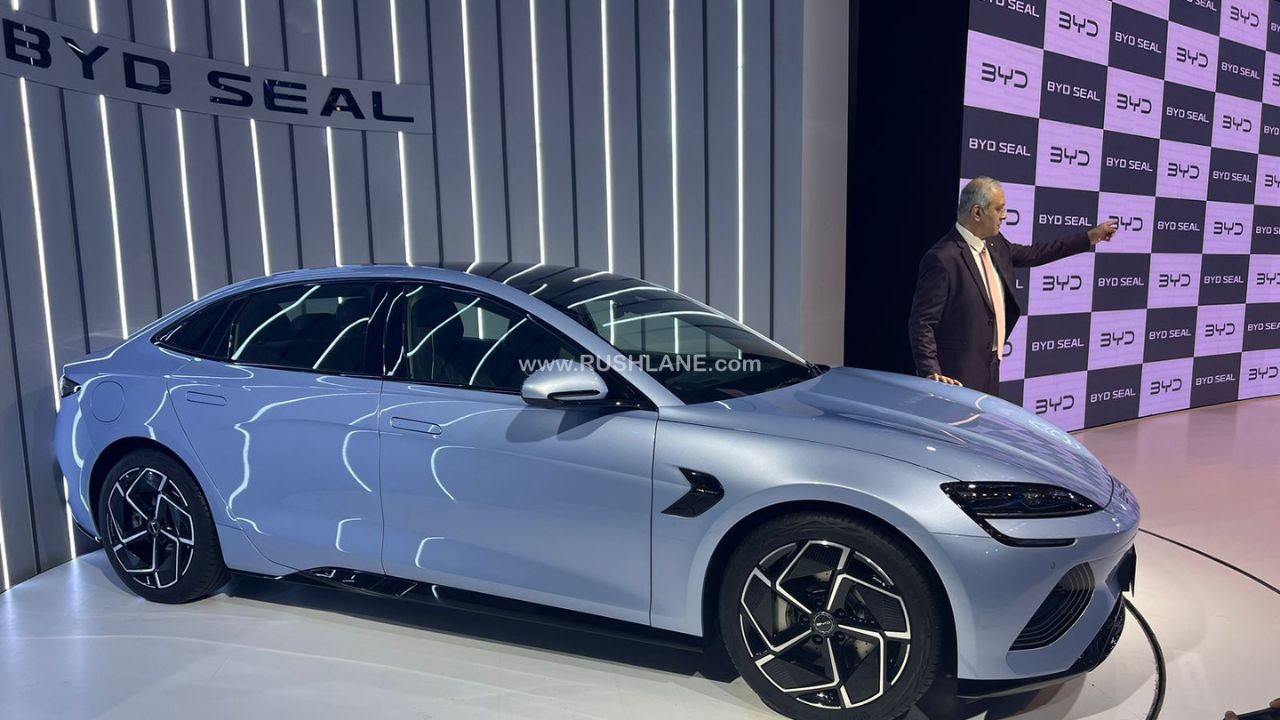
Where pricing is concerned, BYD’s top-spec Performance trim with 82.5 kWh battery, dual motor AWD, 0-100 km/h in 3.8 seconds is well-priced too
What a killer price strategy! That’s what I exclaimed after looking at BYD Seal’s prices on the screen from the launch event held in Delhi. At a starting price of Rs. 41 lakh, BYD Seal sedan is a very tempting proposition. Thanks to this aggressive pricing, BYD India has recorded over 200 bookings in just 1 day of launch.
Mr. Sanjay Gopalakrishnan, Senior Vice President of Electric Passenger Vehicle Business, BYD India said: “We are overwhelmed by the incredible response from customers in India. This demonstrates the growing appetite for luxurious and high-performance electric vehicles in India. We are committed to meeting the increasing demand for electric mobility and providing our customers with an unparalleled driving experience through our innovative and cutting-edge technologies in the BYD SEAL. With our range of MPV, SUV and Sedan, today we aim to provide customers complete access to our portfolio here in India.”

BYD Seal Pricing Vs Rival Sedans
Sedans are a dying breed in the greater sense of things in the automotive market. But in 2024, there are fortunately still sedans around for buyers to opt for the classic three-box shaped saloon vehicles. BYD is the latest entrant in this segment and is fully electric. It primarily targets other sedans like Audi A4, BMW 3-Series Granlimousine, Toyota Camry and Mercedes-Benz C-Class. Where pricing is concerned, BYD Seal costs between Rs. 41 lakh and Rs. 53 lakh (ex-sh) and undercuts every single one of its rivals. Interestingly, none of these rivals are fully electric like Seal is.
If you were wondering if Seal is manufactured or assembled in India to strike this pricing, nope. BYD is bringing Seal via the CBU route. Pitting BYD Seal against rivals on paper, we can see that it holds the most value-for-money proposition. We have compared specs of Seal’s top-spec Performance trim that retails for Rs. 53 lakh, which undercuts all German rivals and we have only included petrol variants for this comparo.

The 82.5 kWh battery with dual motor AWD layout and 3.8s 0-100 km/h at just Rs. 53 lakh is an insane proposition. Performance-wise, BMW stands second after BYD. Both Toyota Camry and Audi A4 are FWD, while Merc and BMW are at least RWD. Top-speed is highest with the 3 Series, which was expected considering the performance-oriented ethos of BMW.
Wheels are largest with BYD Seal at 19-inchers, while it is the smallest with C-Class and A4 at 17-inchers. Dimensionally, Camry is longest, 3 Series Granlimousine is widest and BYD Seal is tallest. A4 has the highest ground clearance and BMW has longest wheelbase. Where boot space is concerned, Seal is the only one with a front trunk, but Camry boasts the highest cargo volume.
Emotional factor
BYD Seal packs a neo-futuristic appeal on the inside with a rotatable touchscreen infotainment screen. Materials are high quality too with good fit and overall finish along with material choices. Seal’s coupe-like sloping roofline lends a stylish profile too. This far up the comparison, it almost looks like BYD Seal is a clear winner. Or it is, on paper. However, a car is not just numbers on a sheet and there is an emotional factor involved.

The rival offerings come from manufacturers with cult following and have a massive pull among customers. The badge value is pretty high when compared to that of BYD’s. Every one of these rivals holds their own emotional connection with buyers. If we take the C-Class, it is a baby S-Class with Merc’s legendary status and brand value.
BMW 3 Series Granlimousine has a wheelbase advantage and is touted as the most fun-to-drive offering in this bunch. Audi A4 is the most understated and professional-looking with sharp creases and typical Audi styling. Camry comes from Toyota, a brand regarded to run forever with a no-nonsense appeal. In India, Camry is a VIP mobile too, with rear electrically reclining seats, rear central touchscreen with music controls, rear ventilated seats and many more creature comforts. At the end of the day, customer reception is more important.

